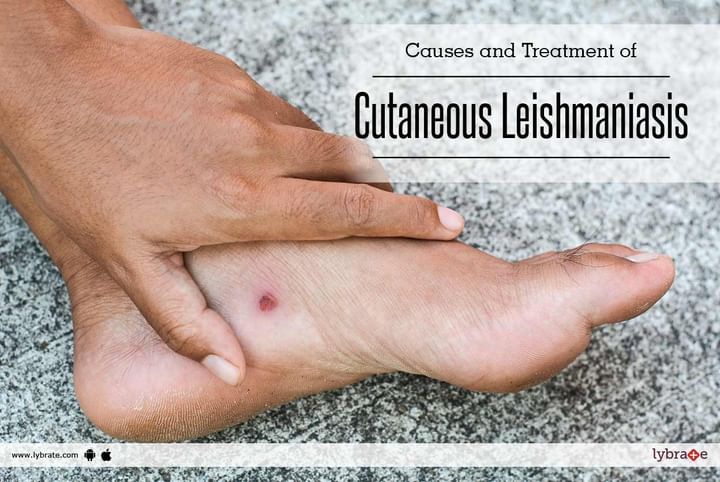Get the App
For Doctors
Login/Sign-up
Last Updated: Jan 10, 2023
BookMark
Report
Causes and Treatment of Cutaneous Leishmaniasis
The most common form of leishmaniasis, cutaneous leishmaniasis is generally identified as a parasitic disease caused by the bite of infected sand flies and is responsible for causing skin sores. These skin sores vary in size and appearance and are susceptible to changes over time. They have often been described as miniature volcanoes, having slightly elevated edges with a central crater, and at times covered by a scab. Occasionally, swollen glands can appear in and around the sores, and may or may not be painful.
Causes:
Causes of cutaneous leishmaniasis include:
- Cutaneous leishmaniasis can be easily spread by the mere bite of certain types of phlebotomine sand flies. Initially, sand flies get infected when they bite an infected animal; say a rodent or a dog, or even another person already suffering from it. They then act as a vector agent and carry the virus around with them. If they happen to bite you, you will discover the growth of these volcanic skin sores gradually, if not immediately.
- Cutaneous leishmaniasis can also be spread via blood transfusions or through the use of contaminated needles.
- Occasionally, though very rarely, cutaneous leishmaniasis can also be spread from a pregnant mother to her newborn baby.
Treatment:
Cutaneous leishmaniasis can be treated in various ways. Some effective methods of treatment may include:
- Cryotherapy
- Local heat therapy (most suitably at around 40 degrees celsius)
- Several topical paromomycin preparations
- Certain types of sodium preparations
- Antibiotic therapy



+1.svg)
